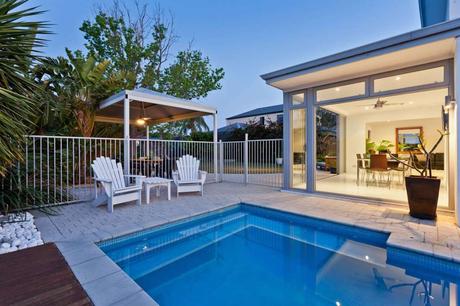
Having a pool is a wonderful addition to any home. It's a place where you can relax, exercise, and create lasting memories with friends and family. But just like anything else, your pool requires regular maintenance to keep it in top shape. One of the essential maintenance tasks you may need to consider is pool relining.
In this blog post, we'll delve into the signs that indicate it's time to get your pool relined. Whether you're a seasoned pool owner or a newbie, understanding these signs can save you time, money, and potential headaches down the road. Let's dive in!
1. Age of Your Pool
Just like anything else, your pool has a lifespan. Most traditional pool liners last between 10 to 15 years. If your pool is approaching or has exceeded this timeframe, it might be time to consider relining. Even if your pool seems to be functioning fine, an older liner is more susceptible to leaks, tears, and other issues. This is why it's a good idea to have a quality pool installation, service and maintenance company on hand for all of your servicing and repair needs.
2. Visible Signs of Wear and Tear
Inspecting your pool regularly is crucial in identifying signs of wear and tear. Look out for:
- Cracks or tears in the liner
- Fading or discoloration
- Wrinkles or bulges
- Patches of rough texture
These visual cues indicate that your pool liner is deteriorating and may need to be replaced soon. Ignoring these signs can lead to more significant problems down the line, such as water loss or damage to the pool structure.
3. Water Loss
If you notice that your pool is losing water faster than usual, it could be a sign of a leak in the liner. While some water loss is normal due to evaporation, excessive or sudden drops in water level indicate a problem. Conduct a simple bucket test by filling a bucket with pool water and placing it on the steps. Mark the water level inside the bucket and on the pool wall. After 24 hours, compare the two levels. If the pool water drops more than the bucket, you likely have a leak that needs addressing.
4. Increased Chemical Usage
Are you finding yourself using more chemicals than usual to maintain the water balance in your pool? This could be a sign of a leak. When water seeps through the pool liner, it can carry chemicals with it, leading to imbalances that require more frequent adjustments. Not only does this increase your chemical expenses, but it also indicates a problem with your pool's integrity that needs to be addressed promptly.
5. Algae Growth
Algae thrive in moist environments, making a leaking pool an ideal breeding ground. If you notice an increase in algae growth despite regular maintenance, it could be a sign that water is escaping through cracks or tears in the liner. Algae growth not only makes your pool unsightly but also poses health risks to swimmers. Addressing the underlying cause by relining your pool can help prevent algae infestations in the future.
6. Structural Issues
In severe cases, a deteriorating pool liner can lead to structural problems with your pool. Water leakage can compromise the integrity of the pool walls and floor, leading to cracks, bulges, or even collapses. If you notice any signs of structural damage, such as uneven surfaces or shifting tiles, it's crucial to address the issue promptly to prevent further damage and ensure the safety of your pool.
7. Odors and Stains
Leaks in your pool liner can allow water to seep into the surrounding soil, leading to unpleasant odors and stains on the pool deck or surrounding area. These odors are often musty or moldy and indicate a moisture problem that needs to be addressed. Stains may appear as discoloration or rust-like marks on concrete or decking materials. While surface cleaning may temporarily mask the issue, relining your pool is necessary to prevent further damage and maintain a clean, inviting pool area.
Conclusion
A well-maintained pool brings joy and relaxation to your home, but it requires regular care to stay in top condition. By keeping an eye out for these signs, you can identify when it's time to consider pool relining. Whether your pool is showing visible wear and tear, experiencing water loss, or exhibiting structural issues, addressing these issues promptly can save you time, money, and hassle in the long run. Remember, prevention is always better than cure when it comes to pool maintenance!
